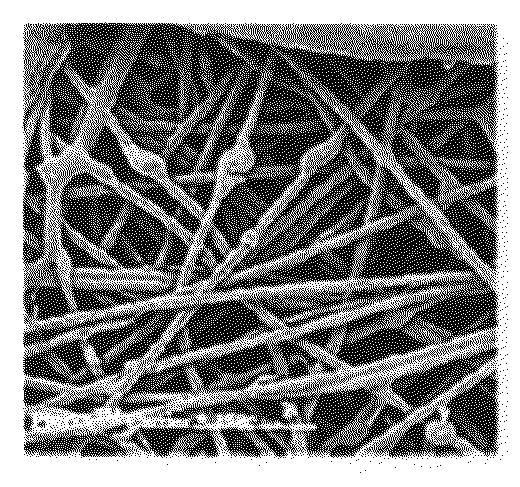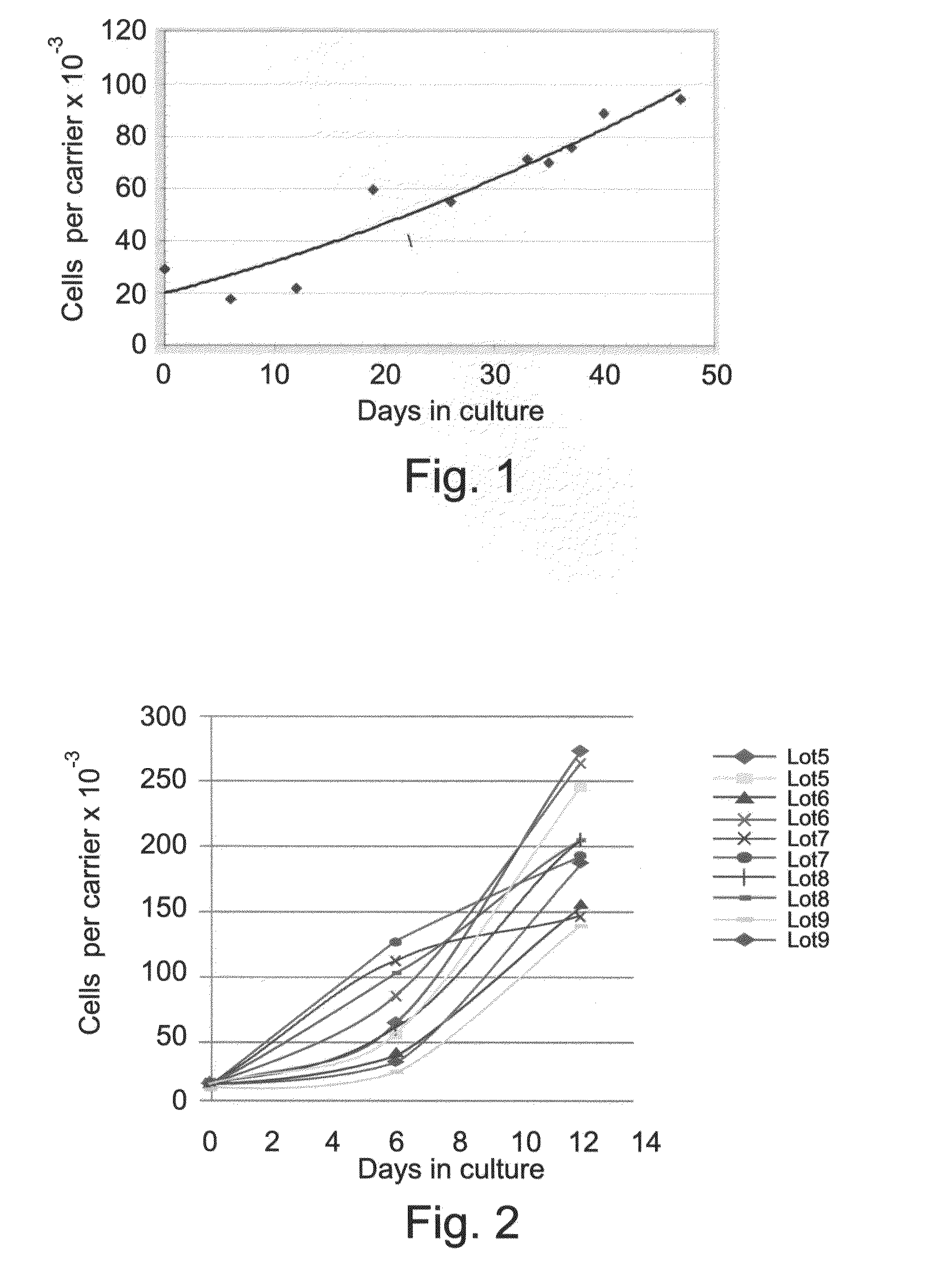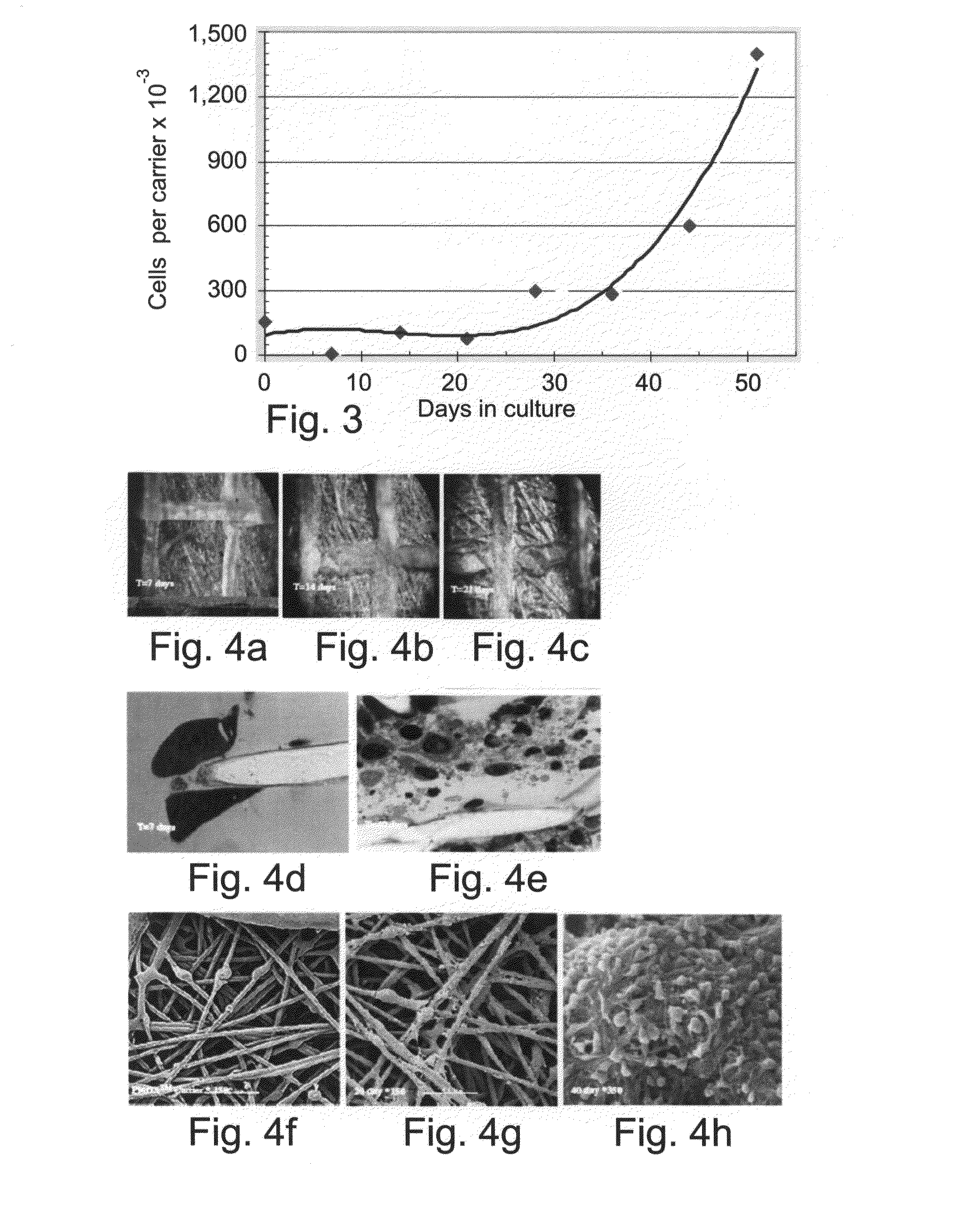Method and Apparatus for Maintenance and Expansion of Hematopoietic Stem Cells From Mononuclear Cells
a technology of hematopoietic stem cells and mononuclear cells, which is applied in the direction of skeletal/connective tissue cells, embryonic cells, biocide, etc., can solve the problems of limited success in ex-vivo methods for growth and expansion of undifferentiated stem cells for prolonged periods, hematopoietic stem cells are found in extremely low proportions, and achieve high engraftment potential
- Summary
- Abstract
- Description
- Claims
- Application Information
AI Technical Summary
Benefits of technology
Problems solved by technology
Method used
Image
Examples
example 1
[0127]The bioreactor system employed while reducing the present invention to practice is depicted in FIG. 11. It contained four parallel plug flow bioreactor units [5]. Each bioreactor unit contained 1 gram of porous carriers (4 mm in diameter) made of a non woven fabric matrix of polyester (58). These carriers enable the propagation of large cell numbers in a relatively small volume. The structure and packing of the carrier have a major impact on oxygen and nutrient transfer, as well as on local concentrations and released stromal cell products (e.g., ECM proteins, cytokines, 59). The bioreactor was maintained in an incubator of 37° C.
[0128]The flow in each bioreactor was monitored [6] and regulated by a valve [6a]. Each bioreactor contains a sampling and injection point [4], allowing the sequential seeding of stromal and mononuclear or hematopoietic cells. Culture medium was supplied at pH 7.0 [13] from a reservoir [1]. The reservoir was supplied by a filtered [3]...
example 2
Establishment of Three-Dimensional Mesenchymal / Stromal Cell Cultures in the Bioreactor
[0129]Cells of divergent origins were used for establishing the mesenchymal / stromal cell culture. Adipose cells, placental derived cells and bone marrow derived cells were seeded onto the polyester carriers as described hereinabove. Adipose tissue, seeded at a load of 30,000 cells per carrier, populated the carriers and proliferated to 100,000 cells per carrier at 45 days (FIG. 1). Placenta derived cells, prepared as described hereinabove, grew from less than 25,000 cells per carrier at seeding in the plug flow bioreactor, to 150-250,000 cells per carrier at 14 days in culture (FIG. 2). Bone marrow derived cells, loaded on the carriers at less than 75,000 cells per carrier, grew to a density of 1,500,000 cells per carrier after 50 days culturing as described hereinabove.
[0130]FIGS. 4a-4h demonstrate the propagation to high densities of the three-dimensional cultures of mesenchymal cells in a flow b...
example 3
Superior Expansion and Growth of Hematopoietic Stem Cells from Unselected Mononuclear Cells
[0132]In order to test whether hematopoietic stem cells can be expanded from an unselected mononuclear cell fraction in the bioreactors, unselected mononuclear cells were seeded along with mesenchymal / stromal cells on carriers, and co-cultured in the flow bioreactor system. Expansion of hematopoietic stem cells (e.g. CD34+) from the unselected mononuclear cells was compared with that of cultures initiated with pre-selected, hematopoietic stem cells.
[0133]FIGS. 6a-6d show the surprisingly superior (greater than 10 times) fold expansion of hematopoietic stem cells (CD34+) cultured on carriers with human bone marrow stromal cells, especially during the first 14 days in culture, as compared with expansion from pre-selected CD34+ cells culture. FIGS. 7a and 7b, represent a FACS analysis of the hematopoietic stem cell population at 14 days culture. FIG. 7a-b demonstrated further evidence of the supe...
PUM
| Property | Measurement | Unit |
|---|---|---|
| pore size | aaaaa | aaaaa |
| diameter | aaaaa | aaaaa |
| width | aaaaa | aaaaa |
Abstract
Description
Claims
Application Information
 Login to View More
Login to View More - R&D
- Intellectual Property
- Life Sciences
- Materials
- Tech Scout
- Unparalleled Data Quality
- Higher Quality Content
- 60% Fewer Hallucinations
Browse by: Latest US Patents, China's latest patents, Technical Efficacy Thesaurus, Application Domain, Technology Topic, Popular Technical Reports.
© 2025 PatSnap. All rights reserved.Legal|Privacy policy|Modern Slavery Act Transparency Statement|Sitemap|About US| Contact US: help@patsnap.com



